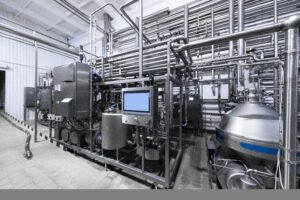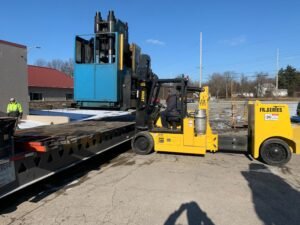In the ever-evolving landscape of industrial maintenance, businesses often find themselves at a crossroads when deciding between outsourcing and maintaining in-house capabilities. This decision can significantly impact operational efficiency, costs, and overall business performance. In this comprehensive analysis, we will delve into the key aspects of outsourcing versus in-house maintenance within the industrial sector, exploring the advantages, challenges, and considerations associated with each approach.
The Dynamics of Industrial Maintenance
Before delving into the comparative analysis, it’s essential to understand the dynamics of industrial maintenance. Industrial facilities, whether manufacturing plants, refineries, or utilities, rely on a myriad of machinery and equipment to function optimally. Regular maintenance is crucial to prevent breakdowns, ensure safety compliance, and extend the lifespan of these assets. The question then arises: should companies handle maintenance tasks internally or outsource them to external service providers?
Outsourcing in Industrial Maintenance
Outsourcing maintenance services has become a popular choice for many industrial enterprises. This section explores the advantages and challenges associated with outsourcing in the context of industrial maintenance.
Advantages of Outsourcing
- Cost Efficiency:
Outsourcing maintenance tasks can often result in cost savings. External service providers can leverage economies of scale, spreading costs across multiple clients. This can lead to reduced expenses for labor, equipment, and materials. - Specialized Expertise:
Industrial maintenance encompasses a wide array of disciplines, from electrical and mechanical to instrumentation and control systems. Outsourcing allows companies to tap into the specialized expertise of service providers, ensuring that the right skills are applied to each task. - Focus on Core Competencies:
By outsourcing maintenance responsibilities, businesses can concentrate on their core competencies. This can enhance overall productivity and efficiency as internal resources are freed up to focus on strategic objectives rather than day-to-day maintenance tasks.
Challenges of Outsourcing
- Loss of Control:
One of the primary concerns with outsourcing is the potential loss of control over the maintenance process. Companies may feel disconnected from the day-to-day activities and decision-making, which can lead to communication challenges and a perceived lack of accountability. - Dependency on External Providers:
Relying on external service providers makes businesses vulnerable to the financial stability and performance of these entities. If a service provider faces challenges, it can directly impact the maintenance services and, consequently, the operational continuity of the industrial facility. - Confidentiality and Security Risks:
Outsourcing maintenance may involve sharing sensitive information about equipment, processes, and technologies with external parties. This poses a risk to confidentiality and may raise concerns about the security of critical data.
In-House Maintenance: The Pros and Cons
While outsourcing offers compelling advantages, in-house maintenance has its own set of merits and challenges. This section examines the dynamics of maintaining industrial assets internally.
Advantages of In-House Maintenance
- Enhanced Control and Oversight:
Maintaining an in-house maintenance team provides a higher degree of control and oversight. Companies can directly manage and monitor the entire maintenance process, ensuring alignment with organizational goals and standards. - Immediate Response and Flexibility:
In-house teams can respond promptly to maintenance issues as they arise. This immediate response capability can be crucial in minimizing downtime and preventing potential disruptions to production schedules. Additionally, internal teams can quickly adapt to changes in priorities or unexpected challenges. - Cultural Alignment:
An in-house maintenance team is more likely to be culturally aligned with the organization. This alignment can foster a strong sense of ownership, commitment, and shared values, contributing to a cohesive work environment.
Challenges of In-House Maintenance
- Higher Operational Costs:
Maintaining an in-house team comes with higher fixed costs, including salaries, benefits, and training expenses. This can strain the company’s budget, especially if the workload fluctuates, leading to underutilized resources during periods of low maintenance activity. - Skill Gaps and Training Requirements:
Industrial maintenance requires diverse skills, and it can be challenging for in-house teams to possess expertise in every area. Addressing skill gaps may necessitate ongoing training programs, adding to the overall costs and time investment. - Limited Scalability:
In-house maintenance teams may face challenges in scaling up or down based on fluctuating maintenance demands. During peak periods, the existing team may be stretched thin, while excess capacity during slower periods can be inefficient and costly.
Comparative Analysis: Outsourcing vs. In-House
With an understanding of the advantages and challenges associated with outsourcing and in-house maintenance, it’s crucial to conduct a comparative analysis to assist businesses in making informed decisions. The following sections explore specific criteria for comparison.
Cost Considerations
Outsourcing
Outsourcing often provides immediate cost savings, especially for smaller and mid-sized enterprises. External service providers can leverage their resources efficiently, spreading costs across multiple clients.
In-House
While in-house maintenance may have higher fixed costs, it can be cost-effective for larger enterprises with consistent and high maintenance demands. The scalability of in-house teams allows for better resource utilization during peak periods.
Expertise and Skill Availability
Outsourcing
External service providers bring specialized expertise, ensuring that tasks are handled by professionals with the right skills. This is particularly advantageous for complex and specialized maintenance requirements.
In-House
In-house teams offer the advantage of deep institutional knowledge and familiarity with the organization’s specific needs. However, addressing skill gaps may require ongoing training initiatives.
Flexibility and Responsiveness
Outsourcing
Outsourcing can provide flexibility in adjusting the scale of maintenance services based on fluctuating demands. However, responsiveness may be influenced by contractual agreements and the service provider’s capacity.
In-House
In-house teams excel in immediate response and adaptability to changing circumstances. The direct connection to the organization allows for quick decision-making and adjustments to priorities.
Risk Management and Security
Outsourcing
Outsourcing introduces risks related to dependency on external providers and potential breaches of confidentiality. Rigorous contractual agreements and due diligence are crucial to mitigate these risks.
In-House
Internal maintenance teams offer greater control over security and confidentiality. However, the risk of employee turnover and insider threats should not be underestimated.
Long-Term Strategic Alignment
Outsourcing
Outsourcing may align with a company’s long-term strategy by allowing it to focus on core competencies. However, long-term contracts and dependencies on external entities require careful consideration.
In-House
Maintaining an in-house team aligns well with long-term strategic goals, fostering a strong organizational culture and commitment. However, businesses must invest in ongoing training and development to keep pace with industry advancements.
Conclusion
The decision between outsourcing and maintaining in-house capabilities in industrial maintenance is multifaceted, requiring careful consideration of the unique needs, goals, and constraints of each business. While outsourcing offers cost efficiencies and access to specialized expertise, in-house maintenance provides greater control, immediate responsiveness, and alignment with organizational culture.
Ultimately, the optimal approach may involve a hybrid model that combines the strengths of both outsourcing and in-house maintenance. For instance, critical and specialized tasks can be outsourced, while routine maintenance and immediate response capabilities are managed internally. This hybrid approach allows businesses to leverage external expertise strategically while maintaining control over core functions.
In conclusion, a thoughtful and strategic evaluation of the specific requirements and objectives of an industrial facility is essential for making the right
choice between outsourcing and in-house maintenance. As technology advances and business landscapes evolve, adaptability and a holistic view of maintenance strategies will be key to ensuring the longevity and success of industrial operations.

















